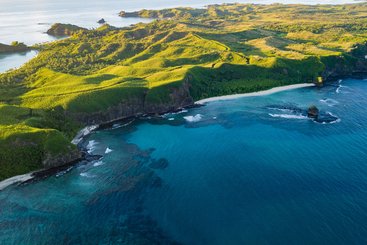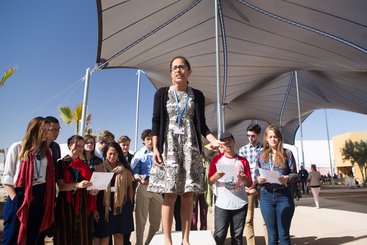The Solomon Islands signed a security pact with China back in April sparking a series of geopolitical responses. A region-wide security deal met with some resistance and was shelved, but China’s diplomacy has re-enforced and strengthened its place in the Pacific prompting Australia to step up its engagement with Pacific islands. Now we’re beginning to see the US response.
President Biden hosted the first ever US-Pacific Island Country Summit in Washington last week. Outcomes included a statement of principles to guide increased US engagement and a headline grabbing $800 million assistance package. This comes on the back of earlier announcements to open embassies in Solomon Islands, Tonga and Kiribati; and a joint move by Australia, Japan, New Zealand, the UK and US to expand cooperation in the region.
US presence in the Pacific
The US has been a Pacific Island nation for over 100 years, since it annexed Hawaii, Guam and American Samoa between 1898-1900. These islands, along with the Northern Marianas, remain part of its territory; with Palau, Federated States of Micronesia (FSM) and Marshall Islands – all formerly UN Trust Territories – becoming independent states in ‘free association’ with the US from 1986.
Historically, the US presence has been concentrated on its military bases in the North Pacific, with leadership and development assistance in the South Pacific delegated to Australia and New Zealand. But this division appears to be breaking down.
What the money will be spent on
The US is pledging more than $800 million of assistance to Pacific Islands over the next decade. But it is unclear how much of this is new money or whether this represents much of an increase compared to what was spent over the past decade.
The principles outlined in the US-Pacific Partnership are more revealing. Climate change adaptation, oceans and regionalism are prominent themes, reflecting the collective ‘Blue Pacific’ identity and agenda of Pacific Small Island Developing States (SIDS) articulated in the 2050 Strategy on the Blue Continent.
Some critical issues have not been addressed by the Summit, including China’s domination of fishing in the region and overexploitation of fish populations, and high levels of debt to China held by some Pacific SIDS.
What does this mean for Pacific Small Island Developing States?
Geopolitical competition in the region presents Pacific SIDS with a dilemma. On the one hand, more attention from larger states could be beneficial. As long as peace prevails, increased great power attention enables SIDS to leverage their geographic location. Competition between the US and China today – and which draws in Australia, Japan, India and New Zealand – provides a platform for small states to articulate their vision and design systems that fit them, as occurred with the 2050 Strategy for the Blue Continent. It also ensures larger states seek to outbid each other for influence.
But the risk is that these territories could one day become embroiled in an armed conflict not of their own making – as happened during the Second World War.
What the US should be mindful of
The US Government will be aware of the complexities of delivering aid to Pacific Islands, including the way archipelagic geographies substantially increase costs. They will also know, based on their experience in Micronesia, that this will likely be a long game.
US presence in the region hasn’t always been benign. Guam and American Samoa remain on the UN decolonisation list. The legacy of colonialism, militarisation and nuclear testing in the North Pacific is profound, and the search for compensation by victims ongoing.
The US has a history of providing assistance to the region via ‘Compacts’, which are longer-term programmes of assistance. These have some advantages over project aid provided by Australia and New Zealand and China’s infrastructure investments – all of which have left or ignored Pacific perspectives. There is absolutely no suggestion that the US will extend these to South Pacific states, but this experience of longer-term commitments and engagement could shift the way assistance is delivered in the region.
However, substantial US assistance has a mixed record of facilitating economic development. Palau has the highest GDP per capita in the region, but FSM and Marshall Islands fare no better than islands to the south that are not covered by the US Compact.
Time will tell how the geopolitics plays out, but clearly the status quo of the last three decades in the Pacific is shifting. SIDS decisions increasingly matter, and they repeatedly show they can adapt geopolitical shifts to their benefit.





